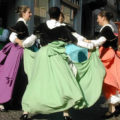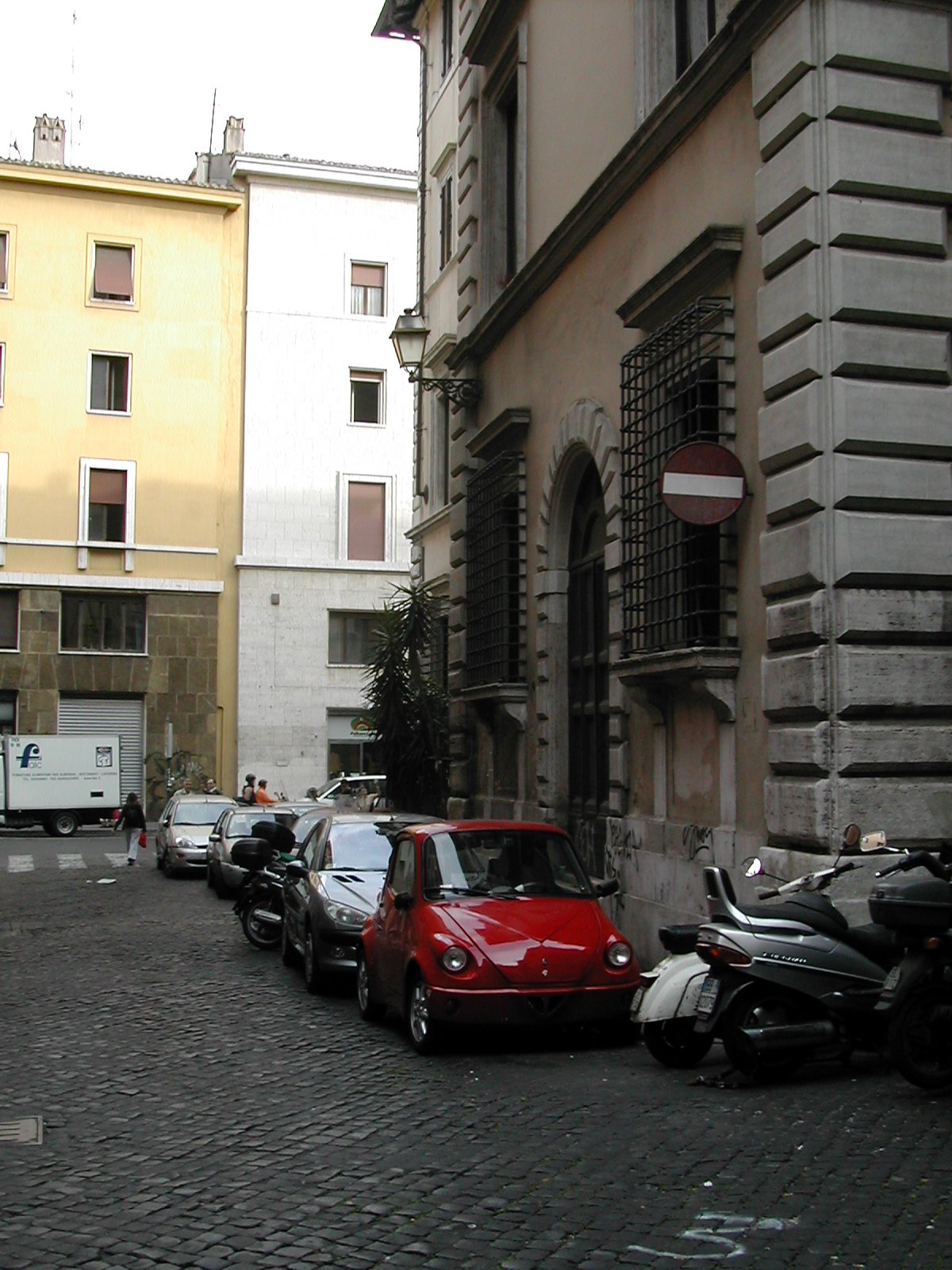Last weekend was the real start of the holiday season for Italians, even though shops and towns started decorating a few weeks ago. The Feast of the Immaculate Conception [of the Virgin Mary], a national holiday, falls on December 8th.
These days, the holiday is mostly enjoyed as a long weekend and the start of the ski season, when families can get away to the mountains because the kids are off school. Shops are open, even on Sunday, because this is also the start of the Christmas shopping season, as Thanksgiving is for Americans.
The Milanese often get an extra-long holiday: December 7th is the day of Milan’s patron saint, Ambrose. Every city and town in Italy has a patron, and therefore a holiday on the saint’s day. This year the Milanese lose out: December 7th was a Sunday, and Milanese schoolkids were in school on Saturday.
So why were the Lecchesi off school Saturday? December 6th is the feast of San Nicolo’, Lecco’s patron – this must be the same Saint Nicholas who puts gifts in the shoes of good little children in Germany on this date (hence the legend of Santa Claus). I had thought San Nicolo’s day was in late June, when we had fireworks and the blessing of the lake, but I now know that that was simply a “Feast of the Lake,” with a rite performed in Nicolo’s name.
When I was a kid, Americans celebrated George Washington’s birthday and Abraham Lincoln’s birthday on their respective actual dates, both in February. Nowadays this has been slimmed down to a generic “Presidents’ Day,” always celebrated on a Monday, though most states now also give a holiday for Martin Luther King.
The Italians have not succumbed to the American habit of making holidays “efficient.” Americans set these floating holidays on a Monday or a Friday so as to assure themselves a three-day weekend. The Italians simply take il ponte (the bridge): if a holiday falls on anything other than Monday or Friday, many people will simply take off the extra day(s) in between, creating a long weekend. Schools have long since bowed to the inevitable, and made all the bridges official school holidays. Some schools even have a week-long holiday in February, in hopes that everyone will go off for their settimana bianca (“white week” – ski holiday) at the same time, minimizing the disruption to teaching.
The Lecchesi have beaten the Milanese at holiday bridges. If December 6th and December 8th are holidays, there is no way anyone’s going to school on the 7th, no matter what day of the week it is.
Catholic Dogma
Dec 17, 2003
I have a lot of Catholics subscribers, it turns out (including one who, as I already knew, is an Augustinian monk and priest), so my confusion over the Immaculate Conception has been cleared up.
“The Feast of the Immaculate Conception celebrates the conception of Mary herself, not that of Jesus. According to Catholic dogma, Mary is the only human to have ever been conceived without original sin. Supposedly this was a pre-requisite for Jesus’ birth, and was foretold by the prophets.
As Catholic dogma goes, this element has been argued back and forth through time, and was only made a permanent fixture in 1854.
You can find a (relatively) brief summary of the history of the IC’s observance here.
A longer discussion, with Biblical evidence for it is here.”
John Francini
American Holidays
Dec 17, 2003
Julie, our correspondent in Austin, responded: “You might be interested to know that Confederate Heroes Day combines the birthdays of Robert E. Lee (Jan. 19) and Jefferson Davis (June 3).” And you’ll notice that it falls very close to (or on) Martin Luther King Day. I’ve heard that some state agencies give their employees the option to take one holiday or the other… but that may just be a rumor.”
Scheduling Holidays
Aug 25, 2004
Prime Minister Berlusconi a few months ago proposed to increase Italian productivity by canceling some holidays, and rescheduling others to fall on Fridays or Mondays and do away with the costly ponte. Predictably, there was screaming and jeering from all fronts.
If you check the helpful US consulate calendar, you’ll see why: most of the holidays are religious ones of long standing. Probably the Pope would scream at any attempt to change them in the name of mere economics, and most Italians would defend them in the name of tradition, even though they aren’t very practicing Catholics.
The Communists (yes, we still have them) would scream if Labor Day were touched – after all, it’s meant to be a day off to celebrate the workers. That leaves the days which commemorate historical events: Liberation Day (liberation from the Nazis and defeat of the Fascists, April 25, 1945), and Republic Day (June 2, 1946, when Italy voted to be a republic instead of a monarchy). The latter has been created (or reinstated) fairly recently by President Carlo Azeglio Ciampi, in a quixotic effort to foster a sense of nationalism and patriotism among Italians – he’s also behind the recent proliferation of the Italian tricolore flag.
Berlusca would also like to reduce the number of vacation days granted to Italian employees. Yeah, right, good luck with that… He himself needs all the holiday time he can get, for cosmetic surgery! I’m not kidding – he had a facelift last Christmas, and a hair transplant just now.
Aug 30, 2004
Aldo tells me: “This has already been tried some 20 years ago.They removed some religious feasts from the calendar, including January 6 (the Epiphany) and June 29 (the feast of St. Peter and St. Paul). Some years later they were forced by popular demand to reinstate Jan. 6th as a holiday. Too bad June 29th was not reinstated – it’s my birthday, and it was fun to have a 100% sure day off for that!”









